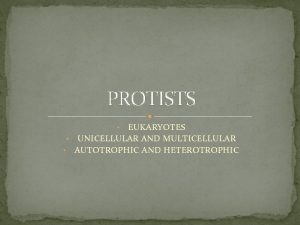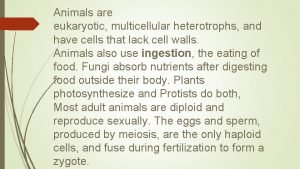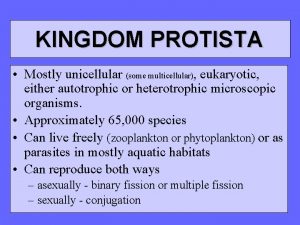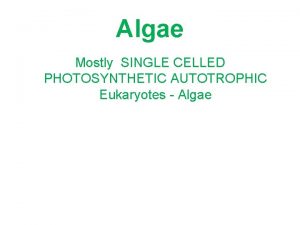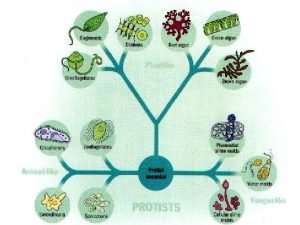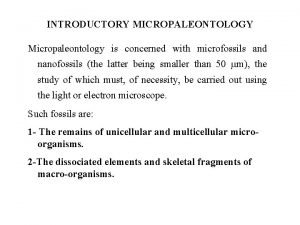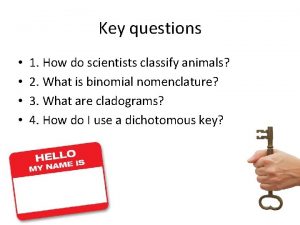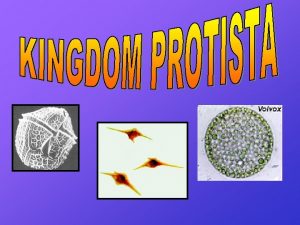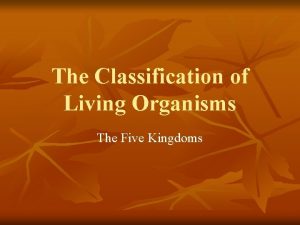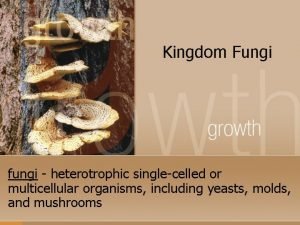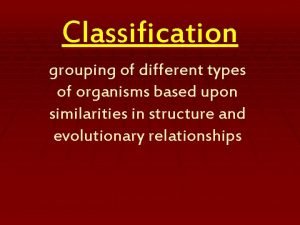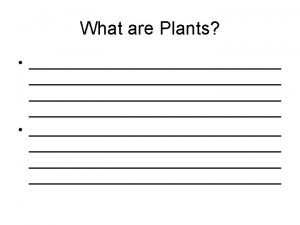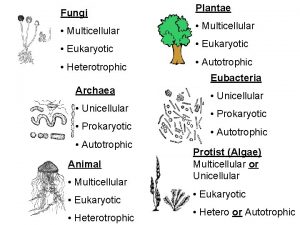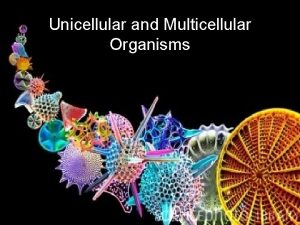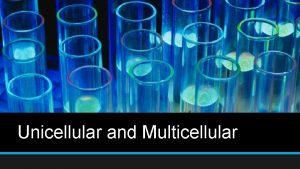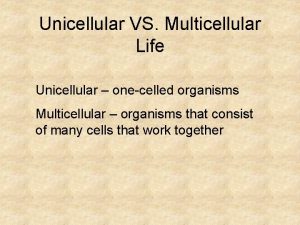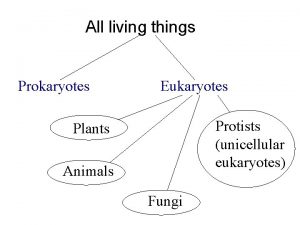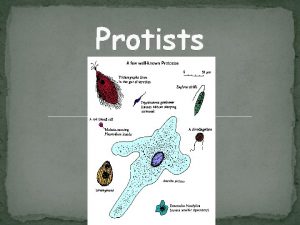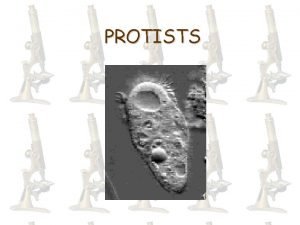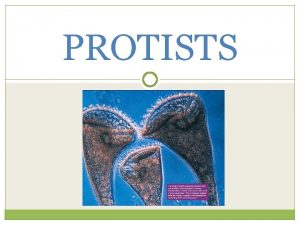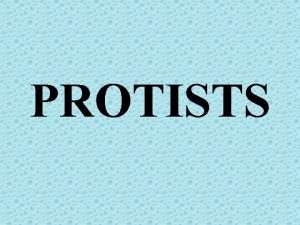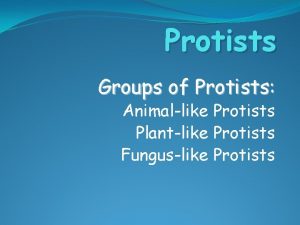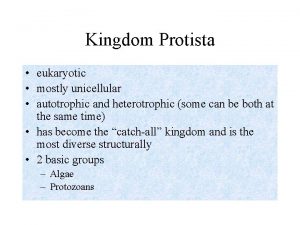PROTISTS EUKARYOTES UNICELLULAR AND MULTICELLULAR AUTOTROPHIC AND HETEROTROPHIC















- Slides: 15

PROTISTS EUKARYOTES • UNICELLULAR AND MULTICELLULAR • AUTOTROPHIC AND HETEROTROPHIC •

Algae � Contain chlorophyll for photosynthesis and an eyespot to help with detection of light.

Protozoans �Amoeba: move by the use of pseudopodia (false feet) �Zooflagellates: Move by use of flagella

Bundles of cilia Two protozoans… This one is about to be eaten!

FUNGI EUKARYOTIC • UNICELLULAR OR MULTICELLULAR • HETEROTROPHS (DECOMPOSERS) •

Special Fungi � Lichen �Symbiotic association between fungus and photosynthetic organism. �Photosynthetic organism provides a source of energy �Fungus provides water, minerals and protection

Lichen

Mushrooms

PLANTAE EUKARYOTIC AUTOTROPHIC MULTICELLULAR

Types of Plants Bryophytes Gymnosperms Angiosperms • Non-vascular • No xylem or phloem • Examples are mosses • They are small • Have to be near water • No pollen, seeds, flowers, or fruits • Vascular • Xylem to move water • Phloem to move food • Examples are conifers • Have pollen (sperm) • Have seeds on cones • No fruits or flowers • Vascular • Xylem to move water • Phloem to move food • Examples are flowering plants like oak trees, corn, and roses • Have pollen (sperm) • Have seeds in fruits • Have flowers

PLANT ADAPTATIONS �Root, stem, leaf � Roots are adapted to absorb water with root hairs � Leaves are adapted for photosynthesis by being flat and green � Stems move water with xylem �Flowers and Fruits � Flowers have bright petals to � � � attract pollinators Pollen (sperm) can be transferred by animals When egg joins with pollen, a seed is formed in the ovary The ovary becomes the fruit Fruit surrounds and protects seed Fruit also helps get baby plants in seeds away from parent plant

Vascular Tissues �Xylem � Transports water up from the roots �Phloem � Transports sugars down from the leaves

ANIMALIA EUKARYOTIC MULTICELLULAR HETEROTROPHIC

TYPES OF ANIMALS Annelids Insects Amphibians Mammals • Segmented worms • No backbone • “Breathe” through skin • External fertilization • External development • No backbone • Three body segments • Six legs • Wings • External fertilization • External development • Metamorphosis • Have backbone • Moist skin • Gills when young, lungs when adult • Three chambered heart • Cold-blooded • External fertilization • External development • Metamorphosis • Jelly-like egg • Backbone • Hair • Milk glands • Lungs • Four-chambered heart • Warm-blooded • Internal fertilization • Internal development

Phylogenetic Trees & Cladograms �Both of these show evolutionary relationships, but only the PT show estimated amounts of time. �Both show derived characters (new adaptations).
 Are protists autotrophic or heterotrophic
Are protists autotrophic or heterotrophic Eukaryotic, unicellular, and autotrophic
Eukaryotic, unicellular, and autotrophic All animals are multicellular heterotrophs
All animals are multicellular heterotrophs Protists unicellular or multicellular
Protists unicellular or multicellular Protists are unicellular or multicellular
Protists are unicellular or multicellular Algae are autotrophic. *
Algae are autotrophic. * Protozoa are polyphyletic
Protozoa are polyphyletic Seven kingdom classification
Seven kingdom classification Micropaleontology definition
Micropaleontology definition Are rotifers autotrophic or heterotrophic
Are rotifers autotrophic or heterotrophic Is algae heterotrophic or autotrophic
Is algae heterotrophic or autotrophic Is protoctista autotrophic or heterotrophic
Is protoctista autotrophic or heterotrophic Kingdom fungi multicellular or unicellular
Kingdom fungi multicellular or unicellular Is euglena autotrophic or heterotrophic
Is euglena autotrophic or heterotrophic Multicellular definition
Multicellular definition Plants are multicellular eukaryotes
Plants are multicellular eukaryotes

